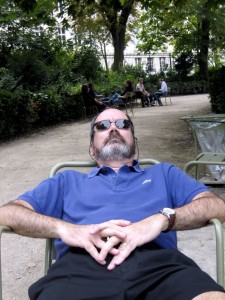How Long Does It Take (To Have A Good Idea)?

Developing a slow hunch.
Friends often ask me how long it takes to write one of my web articles. I can frame the question narrowly or broadly. In the narrow frame, the answer might be 90 minutes or so. In the broad frame, it might be 30 years or so. Talk about a slow hunch.
I’ll illustrate with my most recent article: Hate, Happiness, Imagination. As with many things – especially innovations – the article is a mashup of several different sources and concepts. Let’s track them in chronological order.
The first idea came to me through Graham Greene’s brilliant novel, The Power and the Glory. The novel includes a lovely quote: “Hate is the failure of imagination”. Greene wrote the novel in 1940, so the idea is now at least 75 years old (or perhaps older since Greene seems to echo previous authors).
I read the novel when Suellen and I lived in Guanajuato, Mexico in 1980. The quote about hate and imagination struck me and has stuck with me ever since. So, I’ve been gestating the idea for 35 years. I would occasionally mention it to friends but, otherwise, I didn’t do much with it.
In 2005, David Foster Wallace gave his famous commencement speech at Kenyon College. He stressed that, all too often, we fail to imagine what life is like for other people. If we did use our imagination more fully, we would empathize more, and our lives would be richer and fuller. First, we have to recognize that we can make a choice — that we don’t have to operate on our egocentric default setting. Second, we actually have to make the choice.
I didn’t know about Wallace’s speech until I started teaching critical thinking. As I looked for sources, I came across a video of the (abridged) speech and used it several times in my class. I first stumbled across it in 2012.
I didn’t do much with the Kenyon College speech until a few weeks ago. Frankly, I had forgotten about it. Then one of my students discovered it and asked me to show it to the class. That led to a very healthy discussion during which I connected what Wallace said to what Greene wrote.
Bingo! I made the connection between the two ideas. Why did it take me so long? Probably because I was just thinking about it. Thinking is fine but I don’t think that merely thinking creates many new ideas. The give-and-take of the class discussion stimulated me to make new connections. The diversity of opinions helped me open up new connections rather than merely deepening old connections.
Still, I didn’t have a complete thought. Then Suellen read me a paragraph from a review of the new biography of Saul Bellow. The review mentioned Bellow’s belief that imagination is “eternal naïveté”. When I realized what he meant by that, it dawned on me that it completed the thought. Greene connected to Wallace connected to Bellow.
What can we learn from this? First, this little story illustrates Steven Johnson’s idea of the “slow hunch”. Many good ideas – and most innovations – result from mashing up existing ideas. Unfortunately, we don’t get those ideas simultaneously. We may get one in 1980, another in 2012, and another last month. The trick is to remember the first one long enough to couple it with the second one. (Writing a blog helps).
The other point is that the pure act of thinking is (often) not enough. We need to kick ideas around with other people. Diversity counts. I’m lucky that I can kick ideas around with my students. And with Suellen. If not for them, I wouldn’t be nearly as interesting as I am.
So, how long does it take me to have a good idea? About 35 years.